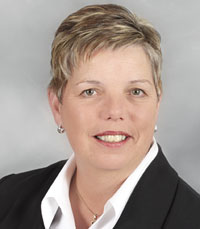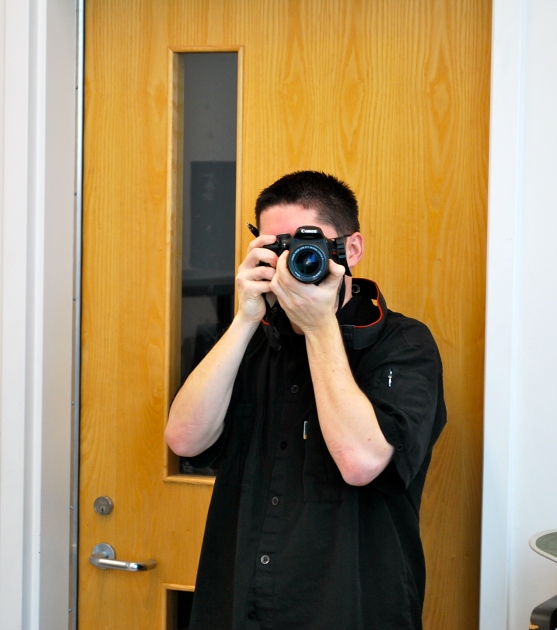Western Journalism
Archive for
Breaking the silence: The effectiveness of women’s shelters
By Billy Courtice
A new research study aims to measure the effectiveness of women’s shelters across Ontario to encourage more government funding, Western University reporter Billy Courtice reports in an upcoming radio doc.
Courtice headed north to the scenic town of Goderich to get a grasp on life in the Huron Women’s Shelter. The doc features a tour of the shelter a shelter occupant who has been in and out of the shelter’s care since 1998.
Shelter director aims to increase provincial funding
At its busiest, Melody Tigani, the residential service manager at the Huron Women’s Shelter in Goderich, Ont. may walk into her office to find a woman sleeping on her couch.
Last October, two months after the town was ravaged by an F-3 tornado, the shelter had a 178 per cent occupancy rate. The crowded situation is not unique to Goderich – women’s shelters across Ontario are housing more occupants than the province is funding them for, a new study shows.
The study comes after Huron’s executive director, Michele Hansen, was required to provide research after she applied for grant money for her shelter, and found that there was none available.
At Huron, a relatively small shelter, the Ministry of Community and Social Services provides funding for 10 beds. But the shelter offers 13 beds, five roll-away mattresses, four cribs, and a sofa, for emergencies.
The average Ontario women’s shelter offers 21 beds, but it is “common” for that number to exceed the province’s designation of number of beds, and the funding the Ministry offers, the research shows.
The Ministry grants nearly $200,000 to Huron each year, covering two-thirds of their costs. That leaves the shelter to raise $100, 000 on their own, Hansen said in a presentation at Western University Monday.
Hansen, along with Nadine Wathen of Western University, have partnered with 68 English-speaking Ontario women’s shelters to produce the Ontario Shelter Research Project, an evaluation of the function of women’s shelters in the province.
The research highlighted a growing gap between provincial funding and actual shelter costs. Operating costs rose roughly 13 per cent to $88.8 million from 2004-2005 to 2006-2007, while Ministry funding increased by just 9.5 per cent, accounting for $72.8 million, according to the study. That gap continues to expand today.
The researchers’ goal is to cement the shelters’ importance in their respective communities in hope of obtaining more suitable provincial funding.
“Having evidence-based research that demonstrates what we do makes a difference,” Hansen said. The project found that the public’s opinion of women’s shelters was hazy, and disconnected from the reality within the shelters.
“There’s a public perception of shelters and what they do and then there’s actuality,” Wathen said. “And the actuality is actually far more complex.”
Most of Ontario’s shelters also provide 24-hour crisis lines, food and clothing, health and legal services, children’s recreation, and a plethora of other resources, aside from simply a safe haven for women. Many, including Huron Women’s Shelter, also provide housing options for women as they prepare to move out of the shelters.
The study is the first attempt to evaluate the province’s shelters, and was made possible through a $248,000 grant from the Ontario Trillium Foundation, Hansen said.
Researchers have completed the project’s first phase, which consisted of interviews with executive directors, staff members, and occupants in the 68 shelter systems. Once results of the study are released publically in the spring, they plan to begin a second phase, which would specify “success outcomes” for each individual shelter.
Those outcomes vary among locations, based on funding and resources available. But Hansen and Wathen said the everyday successes at women’s shelters have been ignored too long by policy-makers.
“I don’t think we need to prove that shelters save women’s lives,” Wathen said. “I just think people need to understand the extent to which that work happens.”
Tyee Tablet Member Q & A with Ariana Wardak, the Lone Wolf
In the upcoming weeks, the documentary folks would like to give you a little taste of what the individual members of the Tyee group are working on, in terms of their ambitious Tablet project. The first person we caught up with from the group was Ariana Wardak, who is mapping local farms and markets all to make the Tablet project that much more interactive for its readers.
Below is a brief video Q & A with her:
Cities of artistic opportunity
By Paul Owen
Working on her latest art project left Julide Cakiroglu a mess.
Mud caked her red rubber boots, flaking off with every step and leaving dark footprints on the sidewalk as she walked away from the empty field that will house her work.
“This is like the muddiest field in the world,” the third-year visual arts student at the University of Western Ontario said of the northeast corner of Oxford Street and Wonderland Road.
For now, the lot is only a vacant patch of land covered in thick brown mud from the rain and melting snow of London’s mild winter. But Cakiroglu, 20, hopes that, in half a month, she’ll have turned it into an artistic rendition of an old-fashioned drive-in theatre complete with screen.

Julide Cakiroglu is turning an empty lot into a mock drive-in theatre with help from NSCAD University.
“I’m going to get old cars in there and have a movie and play sort of dreamy kinds of movies,” she said. “I want to make a space that lets people imagine and celebrate this piece of land before it will inevitably be developed.”
Located between a Costco and a busy intersection, Cakiroglu’s lot is one of 18 sites in two cities being transformed as part of a collaborative effort between art classes at Western University and NSCAD University in Halifax.
The idea for collaboration between senior-level installation classes at the two schools began a couple of years ago, according to Kim Morgan, assistant professor of fine arts at NSCAD (formerly known as Nova Scotia College of Art and Design). She met Kelly Jazvac, an assistant professor of visual arts at Western, in Halifax, and the two discussed working together in some way.
It came to fruition this year after Jazvac won $5,000 in funding through Western’s Cohen Explorations Program, offered to one visual arts course each year at Western.
The two combined their advanced installation courses into this collaborative project, with 12 Western students and six from NSCAD working in groups of three. The hope is to develop practical skills that go into large public installations, as well as the artistic ones, said Morgan.
“When you’re doing site-specific installations in public, there’s all kinds of skills that you need to learn: communication, how to write a public proposal, how to go around in the city, search for the sites, find out who owns that site,” she said.
Collaborations also teach students how to communicate and technique on how to work and build ideas together, Morgan said.
“It’s how artists work contemporarily. You’re constantly shipping your work, travelling your work, getting permission to do things,” added Jazvac.
“It seemed like a way that we could do a project that could be better real-life training to be artists.”
But working with others across the country has also posed logistical problems for the students to deal with, even as basic as how to get ahold of each other.
“We were thinking of names of the show, and it was going to be ‘Long Distance Relationships’ or something like that because it’s very difficult,” Cakiroglu said. “ You set a time to meet and maybe a connection doesn’t work or something falls through, and you feel stood up.”
The show was eventually called “Cities of Opportunity” in a tongue-in-cheek nod to London’s recently released theme song.
All students will produce their own piece of art at a specific site in the city, but the plan is for each group to link its project thematically, in addition to providing feedback and critiques for one another, Morgan explained.
For Cakiroglu, that’s why the mud is so important.

A patch of mud near Costco on Wonderland Road is the canvas for Julide Cakiroglu’s latest art project.
“My partner (Jenna Roy), she’s working with patterns in the ground. My Halifax partner (Lu Zheng) is thinking about working with the Halifax hills, so we sort of have this earthy element that we’re talking about,” she said.
The first of three shows the work will be a part of is Tuesday night with a preview at the ArtLab at the John Labatt Visual Arts Centre at Western.
Projects are expected to be completed in both cities by March 16, and students will then have to transform their work to appear in a gallery show April 10 at the Anna Leonowens Gallery in Halifax.
The Reporter goes live today
The print students of Western University’s master of arts in journalism program were hard at work this morning, getting the newest issue of The Reporter magazine online. The issue – online now – features stories on technology, youth, arts, and what’s going on in London, Ontario. Check it out and let us know what YOU think.
Preparation Begins for Tyee iBook Trailer
Tyee members Zara Mcalister, Nida Siddiqui and Doris Wang are responsible for preparing the trailer for the iBook their group is putting together. It is a one-minute preview about the series of articles in the iBook, which are about local farming and production. Continue reading
Watching the Watchmen: A look at the documentary process
Part of the goal of this website is to document the process of this entire class. And while the documentary team has been updating all sorts of content about the tablet groups and the class aggregator work, we haven’t really shown you what we’re doing.
The documentary group is responsible for chronicling the work we’re doing in this class, not just the what, but also the how. Continue reading
A Look at Newcomer English Programs
Doris Wang’s television feature story focuses on newcomers to Canada and the many barriers they face when looking for a job. A new report from TD bank suggests that it isn’t their lack of work experience, nor their English skills that is standing between them and the job market but rather the lack of coordination and consolidation among the many newcomer English programs. Below is a clip from Maria Perez, a LINC instructor who Doris talked to for her feature. Stay tuned for Doris’ final cut of her feature!
Program co-ordinator Paul Benedetti on the online journalism course
Documentarian Alaa Yassin tracked down UWO Master of Arts in Journalism program co-ordinator Paul Benedetti to ask him a few questions about the program and what media employers are looking for in today’s job market.
London helps Syrian citizen journalists
Ariana Wardak is working on a story about the efforts of London’s Syrian community to support citizen journalists in their homeland. The community will be sending smart phones to their embattled countrymen enabling them to record news and information that can then be posted on social media sites.
Syria is becoming an increasingly dangerous place for foreign journalists, and without the commitment of citizens, many of the actions of the oppressive regime will not be made known to the rest of the world.
A shorter version of Ariana’s story will be printed in the London Free Press in the coming days. Stay tuned.
Ontario micro breweries struggling to compete with big name brands
Micro-breweries in Ontario have a tough time competing with big brand advertising and distribution. The disadvantage is causing some of them to be creative with marketing strategies. Stay tuned for the full story by Western journalist Jacob Kuehn!






